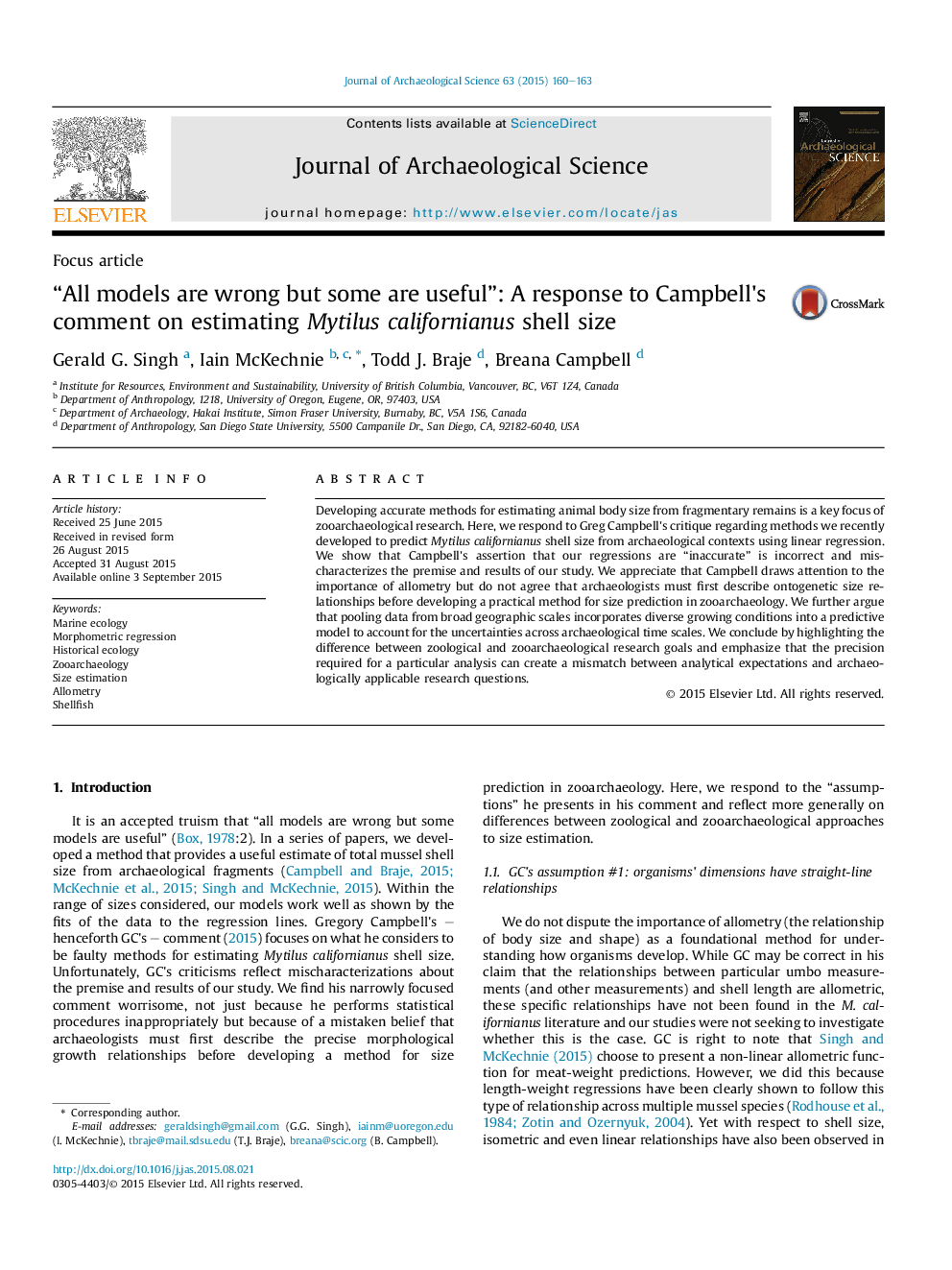| Article ID | Journal | Published Year | Pages | File Type |
|---|---|---|---|---|
| 7441668 | Journal of Archaeological Science | 2015 | 4 Pages |
Abstract
Developing accurate methods for estimating animal body size from fragmentary remains is a key focus of zooarchaeological research. Here, we respond to Greg Campbell's critique regarding methods we recently developed to predict Mytilus californianus shell size from archaeological contexts using linear regression. We show that Campbell's assertion that our regressions are “inaccurate” is incorrect and mischaracterizes the premise and results of our study. We appreciate that Campbell draws attention to the importance of allometry but do not agree that archaeologists must first describe ontogenetic size relationships before developing a practical method for size prediction in zooarchaeology. We further argue that pooling data from broad geographic scales incorporates diverse growing conditions into a predictive model to account for the uncertainties across archaeological time scales. We conclude by highlighting the difference between zoological and zooarchaeological research goals and emphasize that the precision required for a particular analysis can create a mismatch between analytical expectations and archaeologically applicable research questions.
Related Topics
Physical Sciences and Engineering
Materials Science
Materials Science (General)
Authors
Gerald G. Singh, Iain McKechnie, Todd J. Braje, Breana Campbell,
